Visiting the Grand Canyon with Kids: What Most Families Miss
Luis Rafael•May 30, 2025
The Grand Canyon is one of the world’s most amazing natural sights, known for its beautiful views and wide-open spaces. It’s a great place for a family trip. For many parents, exploring the Grand Canyon with their children is something they genuinely look forward to, offering a mix of fun, learning, and peace of mind.
This guide will show you the best ways to enjoy the Grand Canyon with your children and help you plan a fun and memorable trip.
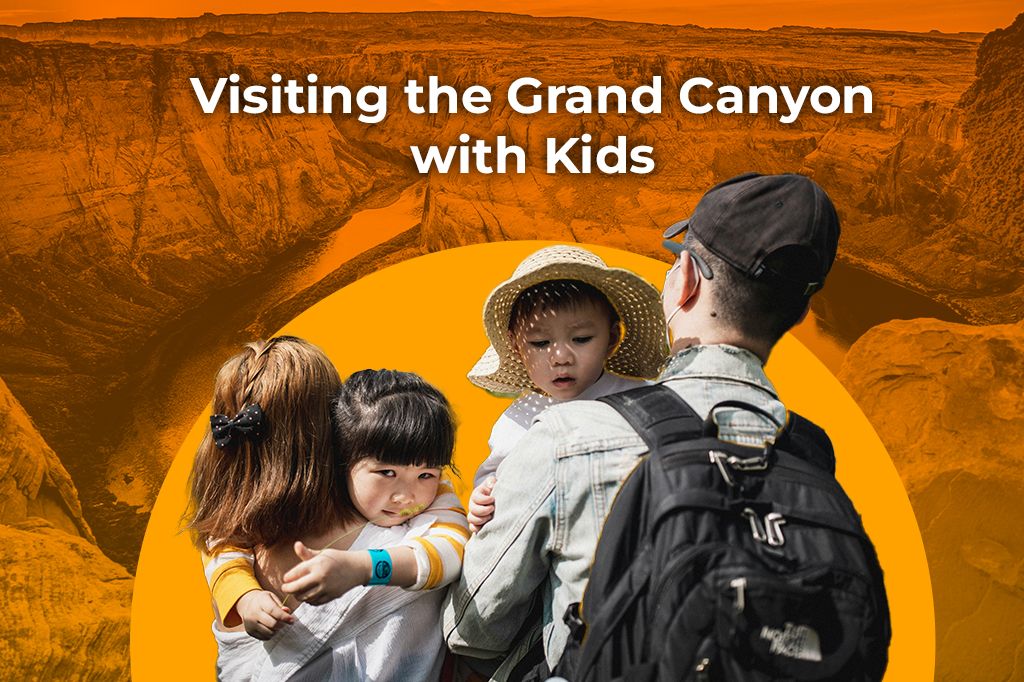
Choose the Best Rim for Your Family Adventure
One of the first big decisions when planning your Grand Canyon with kids trip is: South Rim or North Rim?
The South Rim is generally more accessible and popular, especially for families with younger children or those on a tighter schedule. It features more services, lodging, dining, and easily reached viewpoints. It’s open all year. The North Rim provides a quieter, more remote experience and is open seasonally, typically mid-May to mid-October.
If your family loves to escape the hustle and bustle. You’re planning a longer trip where the journey is part of the adventure, perhaps combining the Grand Canyon with other Utah parks like Zion or Bryce Canyon.
The North Rim’s cooler summer temperatures might be a big plus, and the chance for kids to experience a wilder, less developed side of the park could be a huge draw. If your children are a bit older and appreciate a more serene environment, the North Rim, despite the additional travel time, could provide a more memorable and peaceful Grand Canyon experience with kids.
But if your kids hate long walks. Let’s be honest, the “are we there yet?” chorus can start early on a hike if little legs get tired. When visiting the Grand Canyon with kids, especially if they aren’t keen on extensive walking, pick your trailheads strategically.
-
Look for viewpoints with minimal walking: Many iconic South Rim views, like Mather Point or Yavapai Point, are very close to parking areas or shuttle bus stops.
-
Choose trails along the rim: The Rim Trail on the South Rim is mostly paved and relatively flat, allowing you to walk as much or as little as you like between shuttle stops. You can enjoy stunning views without committing to a steep descent.
-
Utilize shuttle buses: The South Rim shuttle system is excellent. You can hop on and off at various points, allowing you to see a lot without much walking. Study the shuttle map and plan short walks from a stop to a viewpoint and back.
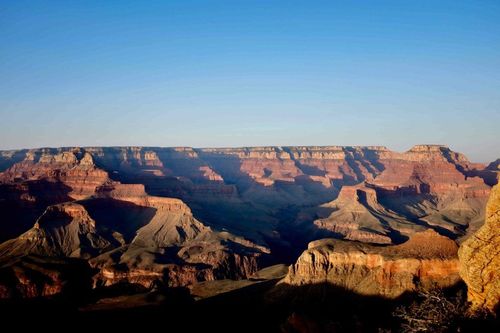
| Feature | South Rim | North Rim |
|---|---|---|
| Accessibility | Easier to reach, more paved walkways | Longer drive, fewer paved areas |
| Weather | Can be very hot in summer; milder shoulder seasons | Cooler summers; short operating season due to snow |
| Crowd Levels | Can be very crowded, especially mid-day | Significantly fewer crowds |
| Amenities | Abundant: hotels, restaurants, shops, shuttles | Limited: one lodge, campground, basic services |
Kid-Friendly Hikes You’ll Actually Enjoy
Hiking in the Grand Canyon with kids doesn’t have to be an Olympic sport. The key is choosing trails that match their age, ability, and, let’s face it, their enthusiasm levels. The goal is smiles, not meltdowns!
To help you plan the best trip possible, we’ve broken down some of the top activities and sights based on age and ability, so you can choose what works best for your family:
-
Trail of Time: Excellent for stroller-aged children and toddlers. This paved, fairly flat path on the South Rim has rock exhibits marking geologic time, making it engaging and educational.
-
Bright Angel Trail (first mile): A good challenge for school-age explorers. Hiking even a short distance into the Canyon offers a unique perspective. Remember, the hike up is tougher.
-
Shoshone Point (Hidden Gem): This spot offers less traffic, a short walk, and great picnic potential. It’s a sanity saver for parents, providing a secluded viewpoint.
-
Pick trails with shade + water stops: Ask rangers about shady trails. Always carry more water than you think you’ll need, as not all trailheads have water stations.
-
“Emergency snack zones” where to rest if energy drops fast: Identify spots for quick breaks and snacks before starting your hike to prevent energy crashes.
-
Avoid underestimating the return hike: The climb out of the Canyon always takes longer and is more strenuous than the descent. Set a firm turnaround time.
Real-World Planning Tips
A little bit of savvy planning can make a huge difference when you’re navigating the Grand Canyon with your crew. It’s about more than just booking a room; it’s about setting yourselves up for a smooth, enjoyable experience. Weather is a big factor, but there’s more to consider for a family trip. Shoulder seasons are perfect for kids: Spring (April-May) and Fall (September-October) mean fewer lines, less intense heat, and often more access to ranger programs. This makes for a more comfortable visit.
If your kids are up with the sun. Use this to your advantage at the Grand Canyon! Here’s a possible 2-day South Rim itinerary:
Choosing the right time to visit the Grand Canyon can enhance your family’s experience, as well as understanding the seasonal changes helps in planning an optimal trip.
- What is the best month to visit the Grand Canyon?
Spring (March to May) and Fall (September to November) are considered the best times to visit. During these months, the weather is mild, and the crowds are thinner, making it better to explore with kids.
- What is the cheapest month to visit the Grand Canyon?
Winter (December to February) is typically the cheapest time to visit. However, be prepared for cold weather and potential snow, especially at the North Rim, which closes during winter. The South Rim remains open year-round, offering a quieter and more budget-friendly experience.
- How many days do you need to explore the Grand Canyon with kids?
For a comprehensive experience, plan to spend at least 2 to 3 days at the Grand Canyon. This allows enough time to visit major viewpoints, enjoy hikes, and take part in educational programs and fun activities without feeling rushed.
Related: Cheap Places to Travel in the US: 10 Affordable Gems
Day 1: Rim Views & Village Exploration
- 6:00 AM: Wake up, quick breakfast at your lodge or in your room.
- 7:00 AM - 9:00 AM: Head to Mather Point or Yavapai Point for sunrise. The light is incredible, and crowds are minimal. Walk a portion of the Trail of Time.
- 9:00 AM - 11:00 AM: Visit the Yavapai Geology Museum (opens early).
– 11:00 AM - 1:00 PM: Lunch (picnic or at a village restaurant) and some downtime/rest. - 1:00 PM - 4:00 PM: Explore Grand Canyon Village, check out Hopi House, Verkamp’s Visitor Center. Consider a short, easy hike along the Rim Trail (e.g., Village to Geology Museum).
- 4:00 PM - 6:00 PM: Attend a Junior Ranger program or a ranger talk.
- 6:00 PM: Dinner.
- Evening: Stargazing (the Grand Canyon has incredibly dark skies!) or an evening ranger program.
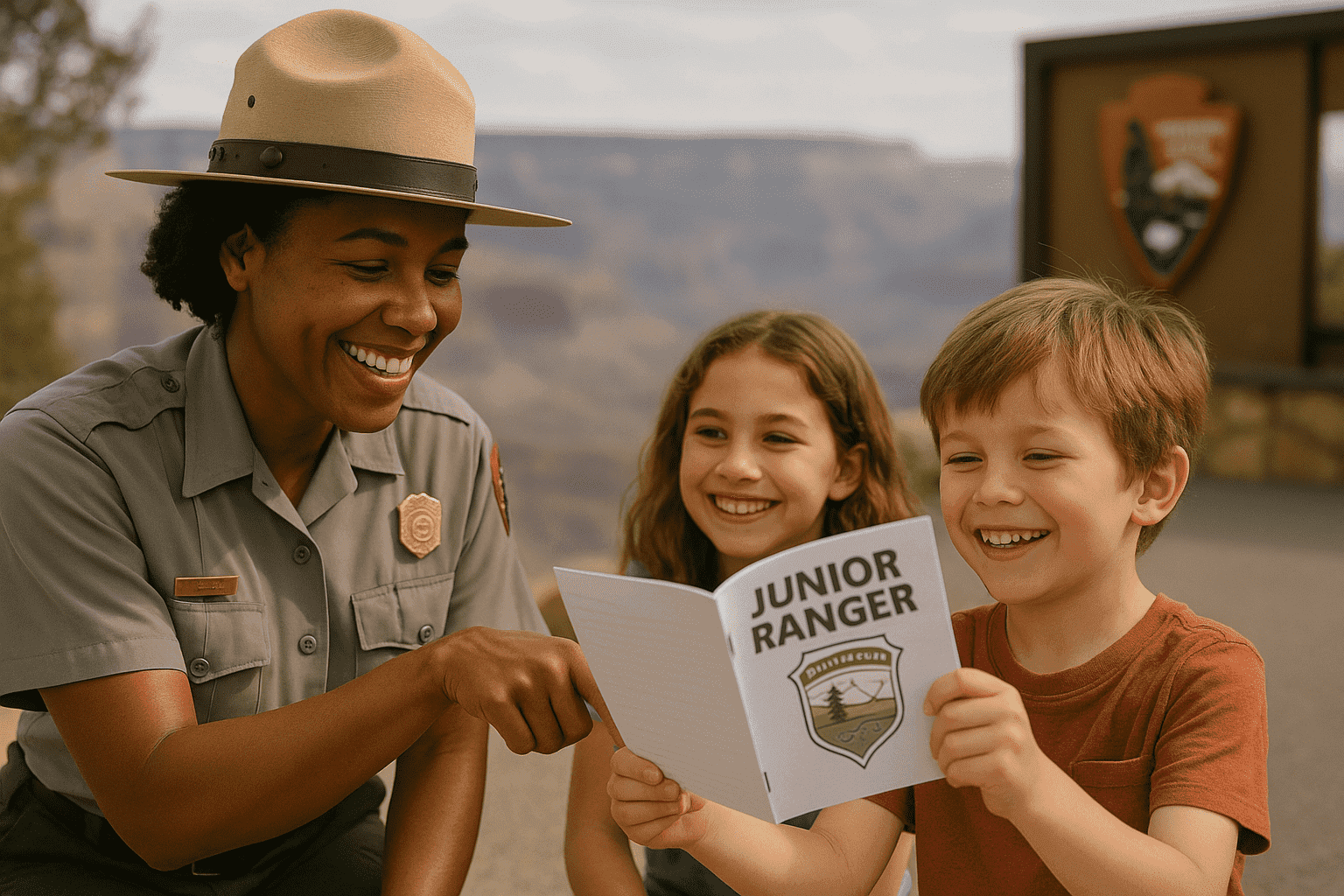
Day 2: Below the Rim (A Little Bit!) & East Rim Drive
- 6:30 AM: Wake up, breakfast.
- 7:30 AM - 10:00 AM: Hike the first part of the Bright Angel Trail (set a strict turnaround time!). Experience being in the Canyon.
- 10:00 AM - 12:00 PM: Snack break, rest, and maybe grab an ice cream.
- 12:00 PM - 1:00 PM: Lunch.
- 1:00 PM - 5:00 PM: Drive east along Desert View Drive (Highway 64). Stop at viewpoints like Grandview Point, Moran Point, Lipan Point (great for sunset if you time it right), and Desert View Watchtower. Explore the Tusayan Ruins & Museum.
- 5:00 PM onwards: Dinner at Desert View or back in the Village, or head to Lipan Point for a less crowded sunset experience.
What to Pack and What to Skip
Packing smart can make your Grand Canyon with kids trip much more comfortable.
-
Surprising must-haves: collapsible water bottles, since these are lightweight, save space when empty, and encourage everyone to stay hydrated. You can also carry sun sleeves or junior binoculars.
-
What not to bring: toys that won’t survive red dust, the fine red dust of the Grand Canyon gets everywhere. Or heavy gear, you’ll regret it, keep it simple and light
-
Stay Connected in Remote Parks: While parts of the Grand Canyon have limited coverage, staying connected for directions, shuttle updates, or family check-ins is still important, especially when traveling with kids. Before your trip, get a Yoho Mobile’s free eSIM trial. It’s a quick and contract-free way to access mobile data in most countries. After your trial, use the code YOHO12 at checkout for 12% off your eSIM plan.
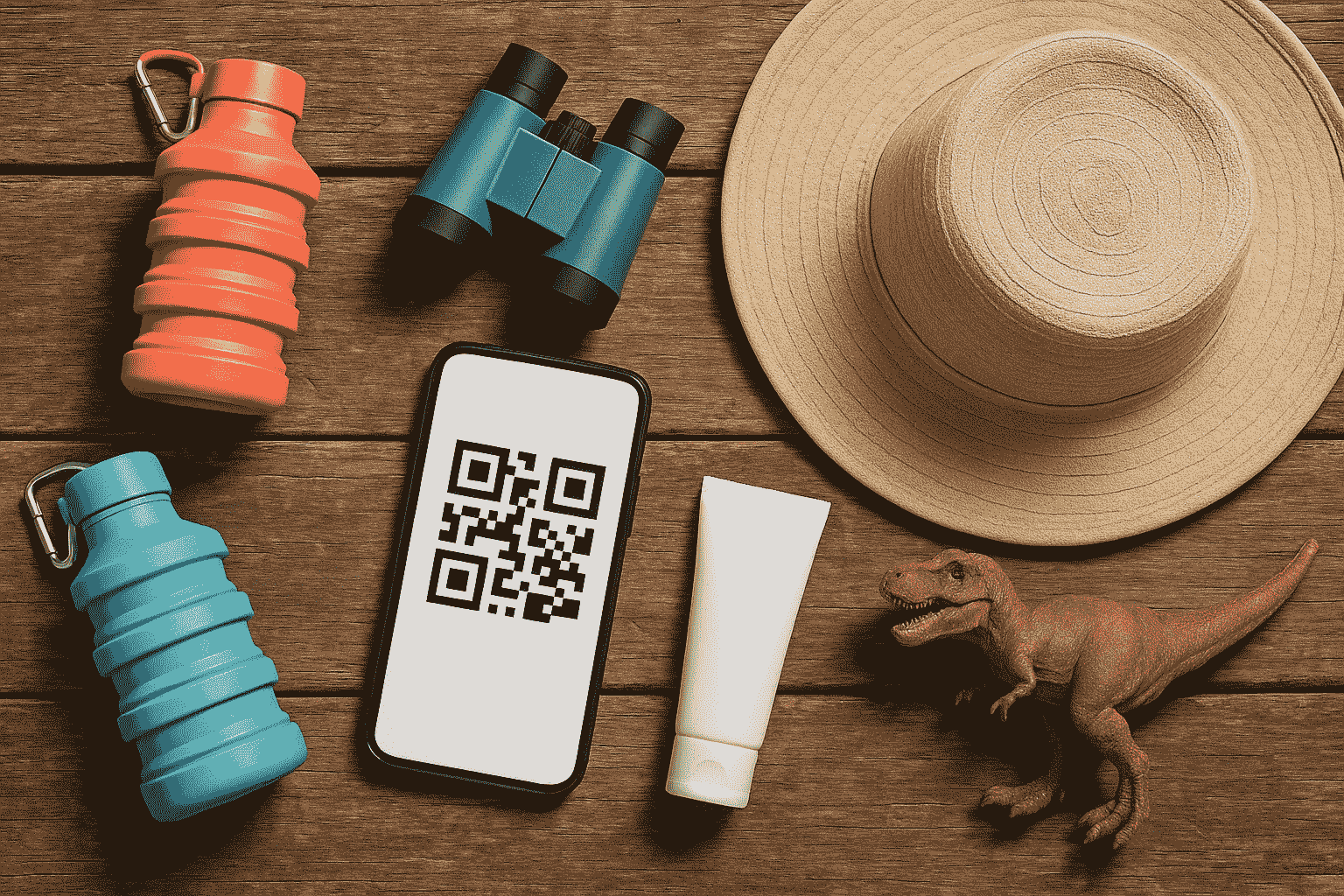
Unique Grand Canyon Experiences for Families
Beyond the stunning views and hikes, the Grand Canyon offers some truly unique experiences that can elevate your family trip from great to unforgettable. A guided tour can take the pressure off parents and provide a new perspective.
-
Grand Canyon Railway: Is it more than just a gimmick? For many families, the Grand Canyon Railway, which runs from Williams, Arizona, to the South Rim, is a resounding yes! The journey itself is part of the fun, with onboard entertainment like musicians and even a mock train robbery that kids often love. Upon arrival, you’re right in the heart of Grand Canyon Village. While it’s an added expense, the unique experience and convenience can be well worth it for a special family adventure.
-
Mule rides: Mule rides into the Canyon are iconic, but they come with strict rules and considerations. For South Rim rides along the rim or into the canyon, there are minimum age (typically 9-10 years old and meeting height/weight requirements) and often weight restrictions. Are they fun for kids? For the right kid, absolutely! If your child is adventurous, comfortable with animals, and not afraid of heights, it can be an incredible experience. However, if your child is timid or easily frightened, it might not be the best choice.
-
Hummer tours vs. ranger talks:
-
Hummer Tours: Cover ground quickly to multiple viewpoints; fun for vehicle-loving kids.
-
Ranger Talks: Free, educational, and engaging programs on park topics. Best for curious families on a budget.
-
Creating an amazing Grand Canyon with kids doesn’t have to drain your wallet. Here are some free or low-cost wins:
-
Junior Ranger badge hunt walkthrough: It is a fantastic (and usually free!) way to engage kids with the park. Children complete a certain number of activities based on their age, which might include attending a ranger program, observing wildlife, writing about their visit, or learning about park safety. Once completed, they show their booklet to a ranger, take an oath, and receive an official Junior Ranger badge.
-
Evening wildlife walks and ranger storytelling As the sun begins to set, the Grand Canyon often comes alive with wildlife. Many evenings, rangers lead guided walks or give storytelling programs, often focusing on nocturnal animals, constellations, or canyon legends. These programs are popular, so it’s wise to arrive 15-20 minutes early to get a good spot, especially if you have younger children who need to see and hear clearly.
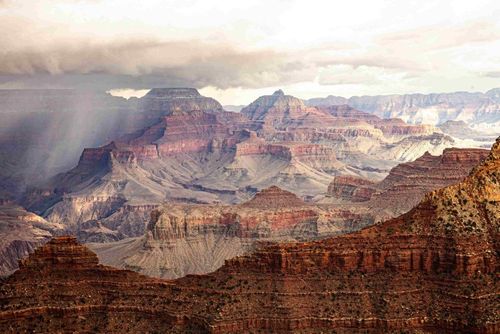
Secret Spots and Hidden Gems Most Families Overlook
While the main viewpoints at the Grand Canyon are popular for a reason, venturing just a little off the beaten path can reward you with equally stunning views and a more peaceful experience. Discovering these secret spots with your kids can make your trip feel even more special.
-
Shoshone Point: We mentioned Shoshone Point earlier as a great hike, but it also deserves a spot as an underrated viewpoint. To reiterate its appeal: it’s a gem beloved by those in the know for its tranquility and beautiful vistas, often without the crowds. You access it via a dirt road (East Rim Drive, between mile markers 244 and 245, look for an unmarked gate on the north side of the road). It’s about a one-mile easy walk from the parking area to the point itself. The area has picnic tables and restrooms, making it a great spot to linger.
-
Lipan Point at sunset: It is famous for its sunset views, and consequently, it gets incredibly crowded, especially with shuttle bus access only during peak season. For a fantastic, and often less congested, sunset experience, head to Lipan Point on Desert View Drive (East Rim). Lipan Point offers expansive views of the Colorado River and a wide panorama of the Canyon. The way the light plays on the different rock layers during the golden hour here is breathtaking.
The Grand Canyon isn’t just about looking; it’s about learning, too! These stops offer engaging ways for kids to connect with the park’s geology and history.
-
Yavapai Geology Museum: Perched right on the rim with enormous picture windows, the Yavapai Geology Museum offers one of the best panoramic views from any building in the park. But it’s more than just a viewpoint. Inside, you’ll find fascinating exhibits that explain the Canyon’s complex geology in an accessible way. There are 3D models, interpretive displays, and often rangers available to answer questions. Kids can learn how the Canyon was formed, identify different rock layers, and gain a deeper appreciation for the immense timescale involved.
-
Tusayan Ruins & Museum: A cultural touchpoint with real teaching moments. Located on Desert View Drive, the Tusayan Ruins and Museum (also known as the Tusayan Pueblo) offers a glimpse into the lives of the ancestral Puebloan people who inhabited the area around 800 years ago. Families can walk a short, self-guided trail around the ruins of the small pueblo, imagining what life was like there. The adjacent museum has artifacts and exhibits that provide context and further information.
Your Kid’s First Grand Canyon Memory Starts Here
Visiting the Grand Canyon with kids is more than just a checkmark on a travel list; it’s an opportunity to create core memories, to inspire awe, and to connect as a family in one of the world’s most spectacular settings. Yes, it requires a bit more planning and a different pace than an adults-only trip, but the rewards are immeasurable. Seeing the vastness of the Canyon reflected in your child’s eyes, hearing their excited questions, and sharing those moments of discovery – that’s what it’s all about.
You can absolutely do this, and trust us, they’ll remember it for a lifetime. The key is to embrace the adventure, be flexible, and focus on enjoying the journey together. The Grand Canyon has a way of captivating everyone, from the tiniest toddler to the coolest tween.
We hope this guide has given you the confidence and the tools to plan an amazing Grand Canyon with kids adventure that goes beyond the typical tourist trail. Now, we’d love to hear from you! What are your top tips for visiting national parks with children? Share your wisdom in the comments below! Always remember to have up-to-date information, such as shuttle maps and program schedules, before you go. Have a good trip!
FAQs
Can you bring a stroller on shuttle buses?
Yes, you can bring strollers on the park’s shuttle buses. However, they must be collapsible and will need to be folded before boarding. Be prepared to manage the stroller, your child, and any other gear while getting on and off the bus.
What if your kid has sensory sensitivities?
Plan for quiet times, seek less crowded areas, bring comfort items, take breaks, and prepare them beforehand.
Where’s the best place for a diaper change with a view?
Restrooms have changing tables. For a “view,” use a portable pad in a discreet, safe spot, always packing out diapers.
What happens if someone gets sick or overheated mid-hike?
Prioritize prevention (water, snacks, sun protection). If illness or overheating occurs, stop, find shade, cool the person, and hydrate. Seek medical help for severe symptoms by contacting a ranger or calling 911.
